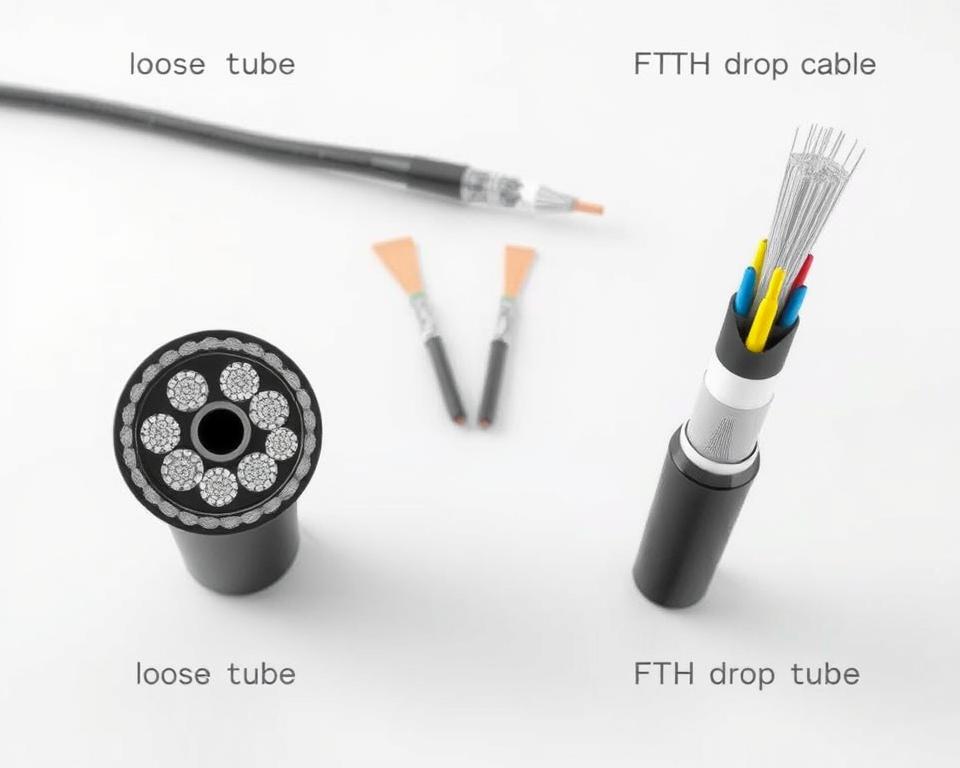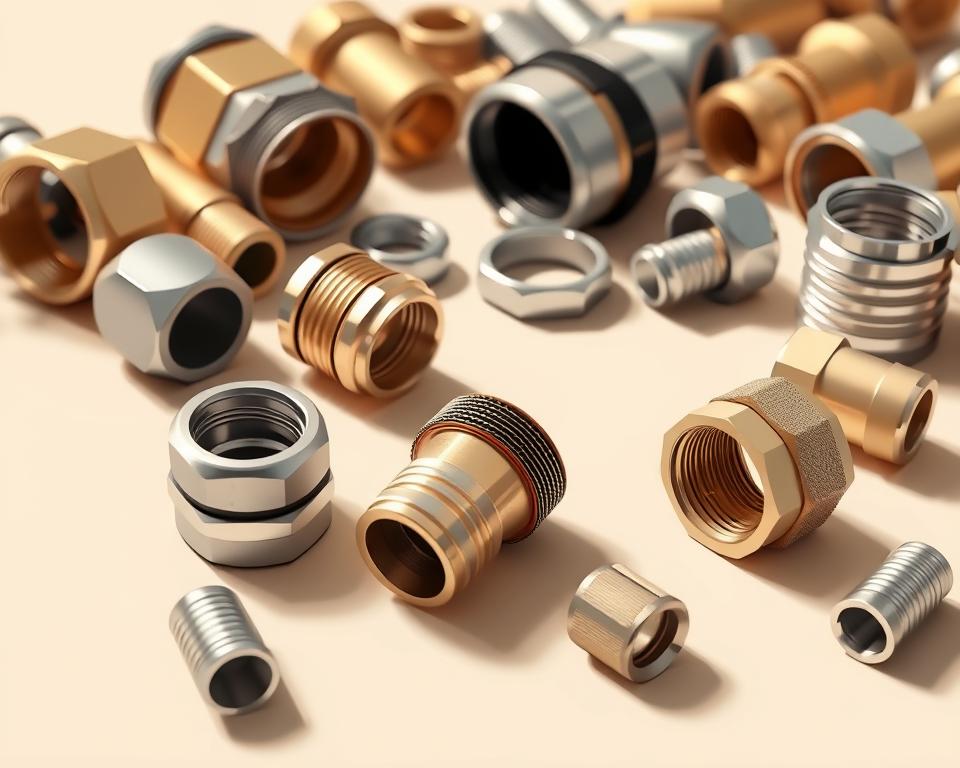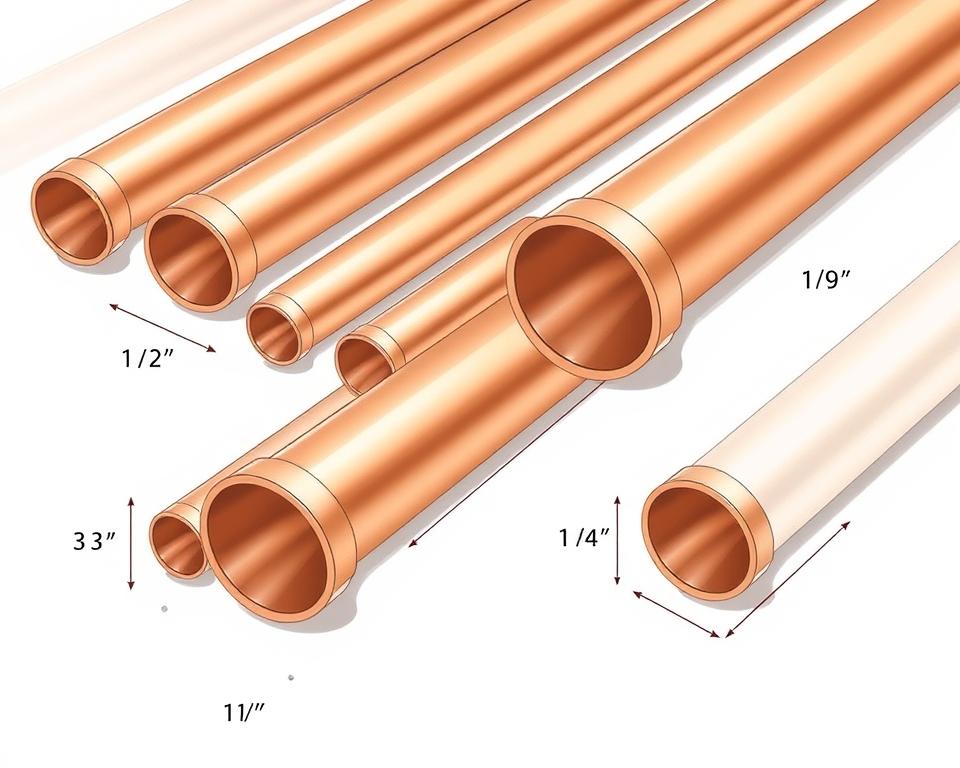Ultimate Guide to FTTH cable Production Line
Here’s a complete overview of the FTTH cable production line. This guide will take you deep into the world of fiber optic cables and their essential part in making high-speed data transmission possible. As the demand for faster and more reliable internet connectivity continues to grow, understanding the intricacies of FTTH cable production becomes essential. This guide will offer you valuable insights into the production of fiber ribbone line, covering everything from the fundamentals of cable infrastructure to the detailed manufacturing process.
Whether you are new to the industry or looking to enhance your knowledge, this guide has you covered. We will explore the key components of FTTH cable systems, the role of optical fibers in FTTH technology, and the process of transforming raw materials into high-quality fiber optic cables. Furthermore, our discussion will include design considerations, stranding techniques, buffering and jacketing processes, and how to efficiently operate the FTTH cable production line.
Keep reading to learn about the advanced technologies that are changing FTTH cable manufacturing, along with the significance of testing and quality assurance in guaranteeing the reliability and durability of fiber optic cables. We’ll also discuss the last stages of packaging and distribution, making sure the FTTH cable production line works without any issues from start to finish.
Main Points:
- The FTTH cable production line is crucial in enabling high-speed data transmission.
- The fundamentals of FTTH cable infrastructure and its key components are crucial to understand.
- The step-by-step production of FTTH cable, starting with silica and resulting in fiber, includes fiber drawing, coating application, and testing.
- Configurations and layouts designed to meet specific network requirements can lead to optimized performance.
- Stranding techniques and central strength members add support and protection to the fiber.
An Introduction to FTTH cable Production
To truly understand the FTTH cable production process, a clear understanding of the cable infrastructure, main components, and the part played by optical fibers in FTTH technology is vital.
Fundamentals of FTTH cable Infrastructure
In fiber-to-the-home (FTTH) systems, the FTTH cable infrastructure is the network of cables, connectors, and distribution points that allows data to be transmitted. It acts as the fundamental structure for high-speed internet connectivity, allowing for smooth data transfer from the provider’s network to the end user’s property.

Essential Elements of FTTH cable Systems
To ensure data transmission is smooth and efficient, FTTH cable systems rely on several key components working in unison. These components include:
- Fiber optic cables: These cables are responsible for carrying the data signals in the form of light. With a design that provides high bandwidth and minimizes signal loss, they ensure fast and reliable data transmission.
- Crucially, connectors join fiber optic cables to other cables or devices, and they also make it easy to connect and disconnect cables when needed. They ensure a connection that is both secure and reliable, thus minimizing signal loss.
- Distribution points: Distribution points are used to divide and distribute the fiber optic signals to multiple end users. They help to ensure that each user receives the appropriate amount of bandwidth without compromising the overall network performance.
Optical Fibers’ Function in FTTH Technology
FTTH technology relies heavily on optical fibers. Made of thin strands of glass or plastic, they are designed to efficiently transmit data signals in the form of light pulses. Optical fibers are known for their high bandwidth capacity, low signal loss, and immunity to electromagnetic interference, making them ideal for high-speed data transmission.
The fibers are made of a core, which carries the light signals, surrounded by a cladding layer that reflects the light back into the core, preventing signal loss. This construction allows optical fibers to transmit data over long distances without degradation in signal quality or speed.
Step-by-Step Process: From Silica to Fiber
Creating the Core: The Fiber Drawing Process
In the FTTH cable production process, the first step is fiber drawing, which involves crafting the core of the cable. This involves taking a glass preform made of silica and pulling and stretching it until it becomes a long, thin fiber. During fiber drawing, the diameter of the fiber is carefully controlled to ensure optimal performance. The cable’s ability to transmit data efficiently and accurately is largely determined by the quality and composition of the core.
Making Sure It Lasts: The Coating Application Process
Once fiber drawing is complete, the next stage is coating application. During this stage, a protective layer, called a coating, is put on the fiber. The coating has several roles, including acting as a buffer against external factors like moisture, which improves the fiber’s long-term durability and reliability. Additionally, the coating material used is carefully selected to have the appropriate mechanical properties, ensuring that the fiber remains intact and protected throughout its lifespan.
Ensuring Quality: Fiber Testing Throughout Production
To ensure the fiber’s quality and performance, fiber testing is performed at different stages throughout the FTTH cable production process. Measurements of the fiber’s physical parameters, such as diameter, attenuation, and tensile strength, are taken during testing, along with inspections of the coating’s uniformity and adhesion. These tests are crucial for ensuring that the fiber meets the required standards and specifications, guaranteeing the overall quality and performance of the final FTTH cables.
| Stage of Production | Testing Parameters |
|---|---|
| Fiber Drawing | Diameter, Attenuation, Tensile Strength |
| Coating Application | Coating Thickness, Uniformity, Adhesion |
FTTH cable Production: Testing Parameters at Different Stages (Table)
Above is a table that summarizes the testing parameters measured at various stages of the FTTH cable production process. To ensure the high-performance and reliability of FTTH cable systems, manufacturers conduct rigorous testing to verify that every fiber used in the cables meets the required quality standards.
Design Considerations for FTTH cable Configurations
The design of cable configurations is a vital aspect of fiber-to-the-home (FTTH) cable production, as it helps meet network requirements and optimize performance. cable design involves considering factors such as network capacity, scalability, and the desired speed of data transmission. Companies can make sure their network infrastructure is deployed efficiently and its capabilities are maximized by customizing cable configurations to meet specific needs.
A variety of FTTH cable configurations and layouts are available, and each has its own advantages and considerations:
- Daisy Chain Configuration: In this configuration, each subscriber is connected sequentially to the main distribution point. For areas with a small number of subscribers, this configuration is a cost-effective solution.
- In the star configuration, the central office or hub is directly connected to each subscriber. It’s a flexible design that’s easy to maintain, making it ideal for areas with a high population density.
- Subscribers are connected in a circle in the ring configuration. This configuration offers backup and can handle failures, so service isn’t interrupted if the network goes down.
- The main distribution point connects to secondary distribution points, which then connect to individual subscribers in a tree configuration. Efficient network expansion is possible with this configuration, making it suitable for areas with a high density of subscribers.
- Mesh Configuration: The mesh configuration provides multiple connections between distribution points, offering high reliability and redundancy. For applications where it’s essential that service never be interrupted, this configuration is commonly used.
When you’re designing FTTH cable configurations, you need to take into account what the network needs and how much it’s likely to grow. Because each configuration has its own set of benefits and limitations, the right one to select depends on factors like how many subscribers there are, the geographical location, and what services are in demand.
By carefully evaluating these factors and collaborating with industry experts, companies can develop customized FTTH cable configurations that meet their specific network requirements and deliver optimal performance.
Methods and Tools for Stranding
To ensure the strength and durability of FTTH cables, stranding techniques and equipment play a vital role in their production. There are different stranding patterns that can be used, and each one has its own benefits and is used for specific applications. Efficient and high-quality cable production requires the selection of the right stranding machinery. The reliability of FTTH cables is also improved by central strength members, which offer additional support and protection to the fiber.
Various Stranding Patterns Explained
The selection of the appropriate stranding pattern is one of the most important parts of FTTH cable production. Depending on the specific characteristics needed for the cable, various stranding patterns are employed, including reverse concentric, SZ stranding, and helical stranding. In terms of flexibility, strength, and how well it resists external factors, each pattern has unique features that can improve the cable’s performance. To make sure the FTTH cables perform as well as possible and last a long time, stranding patterns are carefully chosen to meet the specific needs of the application.
Factors to Consider When Choosing Stranding Machinery
The FTTH cable production line includes stranding machinery as a key element. By maintaining the required tension and alignment of the fibers, it makes it possible to precisely form the stranding pattern. The right Fiber coloring machine machinery to choose will depend on things like the cable’s diameter, the speed of production, and how automated you want the process to be. Manufacturers can meet the demands of producing a lot of cables and also customize them thanks to the increased efficiency and flexibility offered by advanced stranding machines.
Role of Central Strength Members
The mechanical properties of FTTH cables are enhanced through the use of central strength members. They offer stability, improve how much the cable can be stretched without breaking, and protect the delicate fiber inside. Made from materials such as aramid or fiberglass, central strength members act like a spine, making the cable structure stronger and helping it resist external forces. Because they are there, FTTH cables can handle the stresses of being installed and keep the signal transmission working properly, which makes them good for different ways of deploying them.
Protecting the Fiber: An Explanation of Buffering and Jacketing
The delicate fiber inside FTTH cables is protected by the crucial buffering and jacketing processes used in their production. These processes guarantee that the fiber is protected from a wide range of potential threats, including moisture, rubbing, and other external elements that could endanger its performance and how long it lasts.
Understanding the Buffering Process
During the buffering process, a protective layer is applied to the fiber, and this layer serves as a barrier against environmental elements. This layer stops water from getting inside, which can cause the signal to be lost or even the fiber to break. Buffering also makes the cable more resistant to rubbing, which lowers the chance of damage when it’s being installed or maintained.
To minimize stress on the fiber, the buffering materials used must stick to it very well and have a low coefficient of friction. The selection of the appropriate buffering material depends on factors such as the environmental conditions the cable will be subjected to and the desired level of protection.
Choosing the Right Materials for Jacketing
To further protect the fiber and the buffering materials, an outer layer is applied in a process called jacketing. Specific selection of the jacketing material is made to offer strong protection against mechanical stress, impact, UV radiation, and other potential hazards.
The flexibility of the material, how well it resists flames, and whether it can withstand the environmental conditions are all factors considered when selecting jacketing materials. Some of the materials that are commonly used for jacketing include polyethylene (PE), polyvinyl chloride (PVC), and low-smoke zero-halogen (LSZH) compounds. The specific application and the standards set by the industry will dictate which material is chosen, as each has its own benefits and drawbacks.
Latest Advancements in Jacketing Technology Application
The advancements in jacketing technologies have revolutionized the protection of FTTH cables. With the newest technologies, you get better strength, more flexibility, and better resistance to things in the environment, which means they last longer and are more reliable.
With tight-buffered cables, an innovative jacketing technology, each fiber is individually buffered with a thin layer of plastic, providing excellent protection and flexibility. Micro-ducts, another technology, use strong tubing to contain multiple fibers, offering high density and making cable installation versatile.
Moreover, there are jacketing technologies that are specifically designed to meet the needs of different industries. For instance, cables used in harsh outdoor environments might incorporate armored jackets, providing superior protection against rodents, moisture, and extreme temperatures.
FTTH cables can be customized to suit the requirements of different applications by taking advantage of the latest jacketing technologies, which ensures they perform optimally, have a long lifespan, and are reliable.
Operations on the FTTH cable Production Line
The FTTH cable production line relies on efficient operations to ensure a smooth and streamlined manufacturing process. Every step in the production line is vital for creating high-quality fiber optic cables that make high-speed internet connectivity possible. Manufacturers utilize various machinery and equipment to achieve optimal efficiency.
The manufacturing process starts by getting the raw materials ready, such as the silica needed for fiber drawing. Next, the fiber drawing process begins, and this is where the cable’s core is carefully made to meet the required specifications. Coating application follows, ensuring durability and protection for the fiber.
Quality is a top priority, and rigorous fiber testing is conducted at every stage of the production line to ensure the cables meet the highest standards. This includes checking for things like how much the signal weakens, the bandwidth, and the amount of signal loss.
Efficiency is critical in FTTH cable production line operations. Using machinery and equipment in the most efficient way allows manufacturers to reduce production time and costs and also produce the maximum amount. Additionally, efficient processes contribute to the overall quality of the cables.
The manufacturing process can be complex, involving various stages and components. If manufacturers focus on efficient operations and always look for ways to make things better, they can enhance how efficient and effective their FTTH cable production line is.
To help you fully understand how the FTTH cable production line works, here’s a table summarizing the key machinery and their roles in the manufacturing process:
| Machine | Role |
|---|---|
| Fiber Drawing Machine | Produces the fiber optic cable core by pulling and stretching the silica material. |
| Coating Machine | Applies a protective coating to the fiber optic cable, ensuring durability and resistance to external factors. |
| Fiber Testing Equipment | Conducts various tests on the fiber optic cable to ensure quality and performance. |
| Spooling Machine | Winds the finished fiber optic cable onto spools for packaging and distribution. |
| Jacketing Machine | Applies an outer jacket to the fiber optic cable, providing additional protection and improving its handling. |
By leveraging advanced machinery and technologies, manufacturers can streamline their production line operations, improve efficiency, and deliver high-quality FTTH cables that meet the increasing demand for high-speed internet connectivity.
Latest Technologies Used in FTTH cable Manufacturing
Advanced technologies are essential for improving efficiency and quality in the ever-changing field of FTTH (Fiber to the Home) cable manufacturing. The growing need for high-speed data transmission has led to automation, the integration of AI, and the use of fiber coloring machines, which have completely changed the production process, fostered innovation, and resulted in better products.
Using Automation to Produce Fiber Optic cables
Automation has had a big impact on how fiber optic cables are manufactured. The manufacturing process can be controlled very precisely thanks to advanced machinery and robotics, which leads to consistent quality and fewer errors. Automation makes it possible to produce more cables in less time and with greater accuracy, which ultimately saves money and leads to happier customers.
How AI is Integrated for Quality Control
The integration of artificial intelligence (AI) into the quality control process enables FTTH cable manufacturers to achieve levels of accuracy and reliability that were previously impossible. In real-time, AI algorithms can look at the data from production and find any differences or problems that might affect how good the cables are. This way of checking quality helps to reduce mistakes, make production more efficient, and ensure that only the best FTTH cables are sold.
What Fiber Coloring Machines Can Do
Thanks to fiber coloring machines, FTTH cable manufacturing has been revolutionized, and now there are more ways to customize the cables. Optical fiber strands can be color-coded by fiber coloring machines, which makes it easy to identify them and manage the cables efficiently when installing or maintaining them. By using this technology, manual color coding is no longer needed, which reduces the chance of errors and makes the entire process of deploying cables more efficient.
Quality Assurance in Fiber Optics: The Importance of Testing
It’s of the utmost importance to ensure the highest quality in the field of fiber optics. Throughout the whole production process, strict testing and quality assurance steps are taken to make this happen. Playing a crucial role, standardized testing protocols guarantee the reliability and consistency of fiber optic cables.
Using Standardized Testing Procedures
To make sure every fiber optic cable meets the necessary quality standards, standardized testing protocols are put in place. At each stage of the production process, these protocols specify the testing procedures and criteria that must be followed. By adhering to these protocols, manufacturers can identify and address any potential issues, ensuring that only the highest quality cables are delivered to customers.
Using OTDR for Quality Control in Fiber Optics
Performing quality checks on fiber optic cables relies heavily on the use of Optical Time-Domain Reflectometer (OTDR). OTDR is a testing instrument that sends light pulses to measure the amount of signal loss and reflection along an optical fiber. Technicians can identify problems like fiber bending, signal loss, or damage to the connectors by analyzing the OTDR traces. This enables them to pinpoint the exact location of any faults and take corrective actions, ensuring the overall quality and performance of the cable.
Maintaining Rigorous Quality Assurance Standards
Fiber optic cables are guaranteed to perform consistently and reliably because quality assurance standards are maintained throughout the entire production process. The selection of materials, the processes used to manufacture the cables, and the testing of the final product are all aspects covered by these standards. Manufacturers can guarantee that their products meet the highest quality and performance levels required by the industry by following these strict standards.
Final Stages of FTTH cable Production: Packaging and Distribution
In this section, we will look at the final stages of Fiber coloring machine production, including how they are packaged and distributed. After the cables have undergone the various manufacturing processes, it is crucial to ensure that they are packaged correctly and efficiently to facilitate their deployment and installation in the field. Furthermore, protective packaging solutions are important for safeguarding the delicate fiber optic cables when they are being transported and stored. Efficient logistics and supply chain management are essential to ensuring that FTTH products are delivered to customers in a timely manner, meeting their connectivity needs effectively.
Best Practices for cable Spooling
It’s very important to have efficient cable spooling techniques so that FTTH cables can be installed smoothly and conveniently. Storing and transporting cables in an organized and practical way is possible with cable spools, which also reduces the chance of them getting tangled or damaged. cable installers can save time and effort when deploying cables by using the best cable spooling techniques. The overall look of the installation is also improved by properly spooled cables, which ensures a neat and professional appearance.
The Importance of Protective Packaging for Fiber Optic cables
Using effective protective packaging solutions is essential to keep the delicate fiber optic cables safe when they are being transported and stored. These solutions should provide cushioning, shock absorption, and resistance to external factors such as moisture, dust, and physical impact. Using high-quality packaging materials and techniques allows manufacturers to guarantee that the fiber optic cables will arrive at their destination in the best possible condition, ready for installation. By reducing the chance of damage or the cables not working as well as they should, this not only keeps the cables in good condition but also makes customers happier.
Managing Logistics and Supply Chain for FTTH Products
The successful delivery of FTTH products to customers depends on efficient logistics and supply chain management. This includes making careful plans for how the cables will be transported, stored, and distributed to ensure they arrive when they should and are reliable. By managing the supply chain well, delays can be minimized, products can flow smoothly, costs can be reduced, and customer service can be enhanced..
To Summarize
To conclude, this ultimate guide to the FTTH cable production line has given a complete overview of how fiber optic cables for high-speed internet connectivity are manufactured. The significance of the FTTH cable production line in enabling data transmission that is both fast and reliable has been highlighted throughout this article.
The ability to have seamless communication, streaming, and online activities through high-speed internet connectivity depends on the critical role played by fiber optic cables. The step-by-step process of FTTH cable production, from fiber drawing to buffering and jacketing, ensures the durability and quality of these cables.
Efficiency and accuracy in the manufacturing process have been increased thanks to advanced technologies such as automation and AI integration, which have revolutionized it. Furthermore, the reliability and performance of fiber optics are guaranteed by standardized testing protocols and strict quality assurance standards.
Making sure these essential cables are deployed efficiently and protected during transportation is the purpose of the final steps in FTTH cable production: packaging and distribution. The increasing global demand for high-speed internet connectivity can only be met thanks to the expertise and precision involved in the FTTH cable production line.


